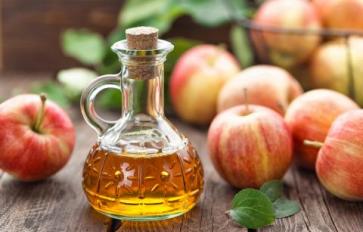
Complex Carbs & Fats: Root Vegetables and Healthy Fats
All-Purpose Potatoes

Average Cost In U.S. and Midwest Region
White Potatoes: $0.31 per pound
Sweet Potatoes: $1- $2 per pound
Time to Reach Maturity
White Potatoes: 70- 120 days
Sweet Potatoes: 90 days
Scraps to Garden
- Save pieces of the potato or a whole potato with at least two eyes intact.
- Leave for 1-2 days for them to form a protective layer for planting (if using cut pieces).
- Dig a hole about 4-5 inches deep and spread organic compost and rotted manure at the bottom.
- Plant the potatoes in the trench at least one foot apart for each plant.
- Plant in well-drained, loose soil.
- When the tubers start to form, water them regularly.
- When the plant reaches 6 inches tall, hoe dirt around it, covering the roots to protect them from the sun. Do this every 2 weeks to protect the crop.
- It is time to harvest when the vines begin to die.
- Dig up, brush off the soil and store in a cool, dark place.
- Do not wash them until you are ready to cook; this ensures a longer shelf life.
Sweet Potatoes

- Save the unblemished sweet potato and make sure there are no cracks in it. (One potato gives 12 plants)
- Store it in a well lit room, at about 65-70 degrees Fahrenheit.
- Use a 1.5 gallon pot, and punch holes at the bottom for drainage.
- Fill pot with 3 inches of mulch and then add potting soil.
- Plant one to two potatoes in the pot at a 45 degree angle to allow slips to grow.
- Leave it there in warm, moist soil for about 90 days.
- When the slips are between 6-12 inches tall, transplant them to the garden.
- Plant in fertile, well-drained soil 12-18 inches apart.
- Make the holes about 10 inches deep, with raised beds going 6 – 8 inches tall.
- Make sure the roots and about 0.5 inch of stem is covered.
- Give it generous portions of water for the first few days.
- They are ready to harvest when the leaves and vines begin to turn yellow.
- Dig up the potatoes with a spade fork to pull up the crown and use your hands to dig up the rest, being careful not to bruise them.
- Shake off the excess dirt, but do not wash the potato off completely.
- To preserve the flavor, cure your potatoes for 10-14 days at about 80 degrees Fahrenheit after digging them up. Do this by placing them on a table outside and spacing them to prevent them from touching each other.
- Wrap them in a newspaper and store in a box or basket.
Fun Facts:
- Potatoes were the first plants to grow in space from seeds germinated aboard the space shuttle Columbia in 1995.
- Humans can survive on a diet of only mashed potatoes made with milk and butter.
- Sweet Potatoes are roots, as opposed to other potatoes, which are tubers.
- Sweet Potatoes can be a substitute in almost any recipe that calls for apples, white potatoes or squash.
- Sweet Potatoes and yams are not the same thing.
Ginger

Average Cost In U.S. and Midwest Region
Organic: $2.79 per pound
Time to Reach Maturity
8-10 months
Scraps to Garden
Note: Ginger is not a root, but a rhizome, which is an underground stem able to produce root.
- Save the pieces of ginger with developed eyes.
- Save fresh, plump ginger rhizomes for planting.
- Soak the ginger overnight in cool, clean water.
- If the rhizome has more than one well-developed eye you can break it up and plant in different spots.
- If you are using a pot fill the container with potting mix almost to the top.
- Plant two rhizomes in a 12-inch deep pot.
- Plant the ginger one-inch deep with the eyes pointing upward.
- If you are planting directly in the garden, find a spot that is getting filtered sunlight with rich, moist soil.
- The soil should be rich enough to feed the ginger; if not add some fertilizer and compost to begin.
- Ginger likes humidity but does not do well with direct sunlight, wind, frost or soggy soil.
- If planting in the garden, space plants about 8 inches apart.
- Keep the soil moist while it is growing but do not overwater as the water will take away some of the rhizome’s nutrients while it is draining.
- You can harvest the ginger when the leaves have died down.
Fun Facts
- Ginger is considered a universal medicine in Ayurveda.
- Ginger is considered as yang medicine because it stimulates the libido, increases heat in the body and boosts your energy and vitality.
Avocado

Average Cost In U.S. and Midwest Region
$1.49 - $2 each
Time to Reach Maturity
3- 4 Years
Scraps to Garden
- Remove the seed from the fruit.
- Wash it and pierce it with 3 – 4 toothpicks.
- Suspend the pierced seed over a glass of water, making sure the flat end of the seed is in the water as this is where the roots will grow from.
- Leave glass in a warm place out of direct sunlight.
- Check the water every 2 days; add more water if needed and change if the water becomes cloudy to prevent mold and bacteria from killing the seed.
- Sprouting should begin in 2-6 weeks; replace the seed if no sprouts appear after 8 weeks.
- When it stems to 6 inches, cut the stem back down in half to encourage more sprouts.
- When the stem has reached 6 inches again it is time to transplant.
- First plant it in a 10.5 inch wide pot.
- Leave the top half of the seed exposed.
- Water it generously.
- If the plant turns yellow, it means you have overwatered it. If this happens, leave it to dry out for a few days.
- When the stem is 12 inches, cut it down to 6 inches to encourage new shoots.
- Choose a sunny spot in the garden and plant in soil with a pH level of 6-6.5.
- Make sure the plant is at least 10 feet from any building as the roots may grow under and break up the structure.
- Place tree in an area where it is protected from the wind and frost.
- The hole for planting should be as big as the root ball with a little space for growth.
- It is best to plant in the March–June months to protect the young tree from sun damage.
- Fertilize the young tree with 1 pound of nitrogen annually.
Fun Facts
- The Aztecs consider the Avocado to be a symbol of love and fertility, perhaps because the fruit grows in pairs on the tree.
- Avocadoes - fruit or vegetable? They are fruit.
- Avocadoes can stay on the tree for as long as 18 months without rotting.
There you have them, 21 foods you can grow in your backyard for a balanced diet for the entire family.
“And he gave it for his opinion, that whoever could make two ears of corn, or two blades of grass, to grow upon a spot of ground where only one grew before, would deserve better of mankind, and do more essential service to his country, than the whole race of politicians put together.” Jonathan Swift, Gulliver's Travels
References







